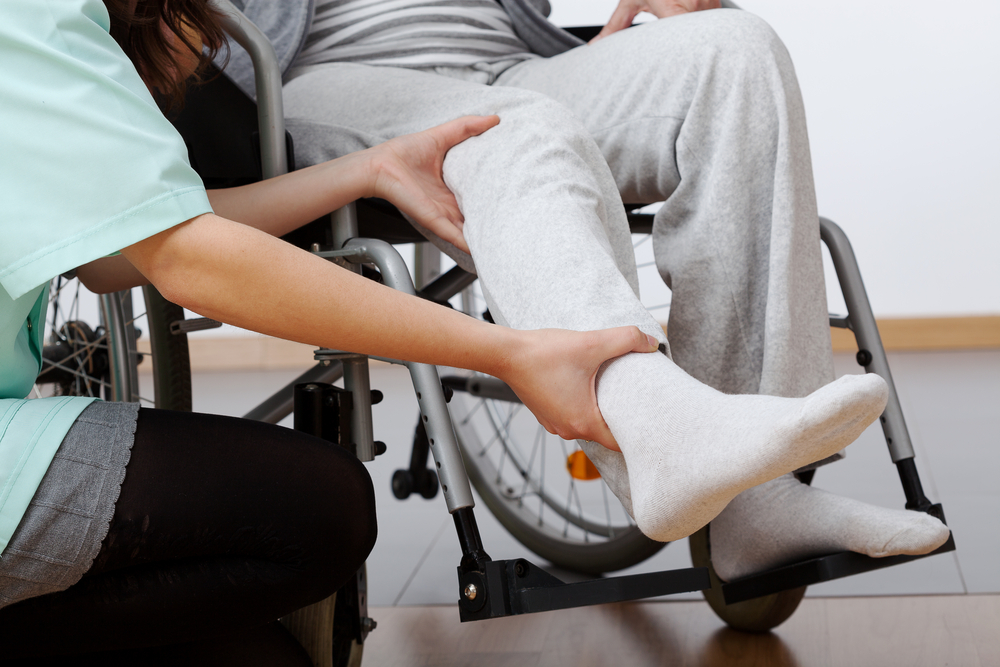Wellness and retirement
Wise Wednesdays.
Many of us dream of an early retirement - as the parent of 3 school age children...
By: Gaitway of Charlotte LLC on Aug 1, 2023 11:58:59 AM

The time after a stroke is confusing. It’s important to know what to do before one happens to ensure the best chances at recovering function. Starting physical therapy (PT) immediately after a stroke provides ample benefits for the recovery process. Fast action has significant perks, like maximizing neuroplasticity and taking advantage of biological mechanisms that help us regain function faster.
What happens during and after a stroke?
When a stroke occurs, a part of the brain is deprived of oxygen and nutrients due to interrupted blood supply, causing brain cells in the affected area to die. However, the brain has a remarkable ability to adapt and rewire itself, known as neuroplasticity. In the immediate aftermath of a stroke, there is an increased level of neuroplasticity, creating an optimal environment for the brain to adapt and reorganize.
Physical activity during PT after a stroke promotes three types of biological processes that aid in healing.
These processes all contribute to the healing and recovery of damaged brain tissue.
A major advantage of early PT is maximizing neuroplasticity. By initiating PT soon after a stroke, ideally two days or less after it happens, the heightened neuroplasticity in the early stages of recovery gets quickly to work. The brain during this time has a greater capacity to rewire and compensate for the damaged areas, leading to improved functional outcomes.
By starting PT early after a stroke, damaged areas of the brain can be stimulated through therapeutic exercises, movements, and activities. This sensory-motor feedback encourages the growth of new neural connections and strengthens existing ones. Additionally, early PT interventions can help prevent negative changes in the brain, such as the brain learning not to use the affected limbs. PT encourages individuals to use and engage the affected limbs and promotes the relearning of motor skills, which prevents the loss of function.
The timing, intensity, and type of PT after a stroke will be determined by the medical team based in charge of care. Their recommendations are based on individual factors such as the severity of the stroke, overall health condition, and medical stability. That said, there are several options for PT that you might encounter after a stroke:
Inpatient Physical Therapy: Inpatient physical therapy takes place in a hospital setting and is more often than not the initial phase of rehabilitation immediately following a stroke. In this setting, people receive intensive therapy to address their mobility, strength, balance, and functional abilities. A team of healthcare professionals will provide the therapy, and they include physical therapists, occupational therapists, and speech-language pathologists.
Subacute Care Unit: Some stroke survivors may be transferred to a subacute care unit after their acute hospital stay. These units provide a transition between the acute hospital setting and a lower-intensity rehabilitation facility. Subacute care typically includes physical therapy accompanied by other forms of therapy and medical care.
Inpatient Rehabilitation Unit: Inpatient rehabilitation units, often located in specialized rehabilitation hospitals, provide comprehensive rehabilitation services for stroke survivors. These units offer a multidisciplinary approach, including physical therapy, occupational therapy, speech therapy, and medical management. The goal is to improve functional abilities, promote independence, and facilitate the transition back to the community.
Home Health Physical Therapy: For individuals who are not able to access outpatient facilities, home health physical therapy is an option. In this approach, physical therapists visit the individual's home to provide therapy sessions. Home health PT allows for personalized care and rehabilitation in the comfort of the individual's own environment. This can be less stressful and keeps the person in their home and their community.
Outpatient Physical Therapy: Outpatient physical therapy involves visiting a rehabilitation clinic or facility on an outpatient basis. This option is suitable for stroke survivors who have transitioned from inpatient care or for those who have milder stroke symptoms. Outpatient therapy provides ongoing rehabilitation services tailored to the individual's needs, focusing on improving mobility, strength, balance, and functional abilities.
Preparation is your most powerful tool for stroke recovery. No matter what happens, you’ll have deeper knowledge and understanding of the condition and its effects. Preparation enables proactive planning, allowing you to arrange appropriate medical care, therapy services, and support networks in case you or someone you care for needs them. By understanding available resources, stroke survivors can smoothly transition from hospital to post-stroke life.
It’s important to explore and understand the different treatment options available to you in the event of a stroke. Preparing for lifestyle modifications, such as adopting a healthy diet and engaging in regular exercise, is crucial for optimal recovery and reducing the risk of future strokes. It can also help you prevent them by staying in good health.
Emotional and psychological preparation is also critically important, as a stroke can have lasting emotional impacts. Being prepared allows those affected to develop coping strategies, seek support, and foster resilience during recovery. It’s impossible to recover alone, so a support network of friends, family, and medical professionals makes for a more comfortable recovery process.
Preparation is the best tool in your stroke-recovery toolbox. It provides you with the framework for goal setting and motivation, which becomes a roadmap for recovery. By setting realistic and meaningful goals, stroke survivors can stay motivated and focused on regaining independence and improving their quality of life. Being prepared also empowers those affected to advocate for their needs by understanding their rights, available resources, and actively participating in their care. Though strokes often come out of nowhere, arming yourself with knowledge goes a long way.
Wise Wednesdays.
Many of us dream of an early retirement - as the parent of 3 school age children...
https://www.bbbgrapevine.org/events-calendar/calendar?type=1
The Better Business Bureau has an...
Consider attending a Gerontology Conference on just that. See Alison Starkey PT, MBA/MHA, CAPS CDP...